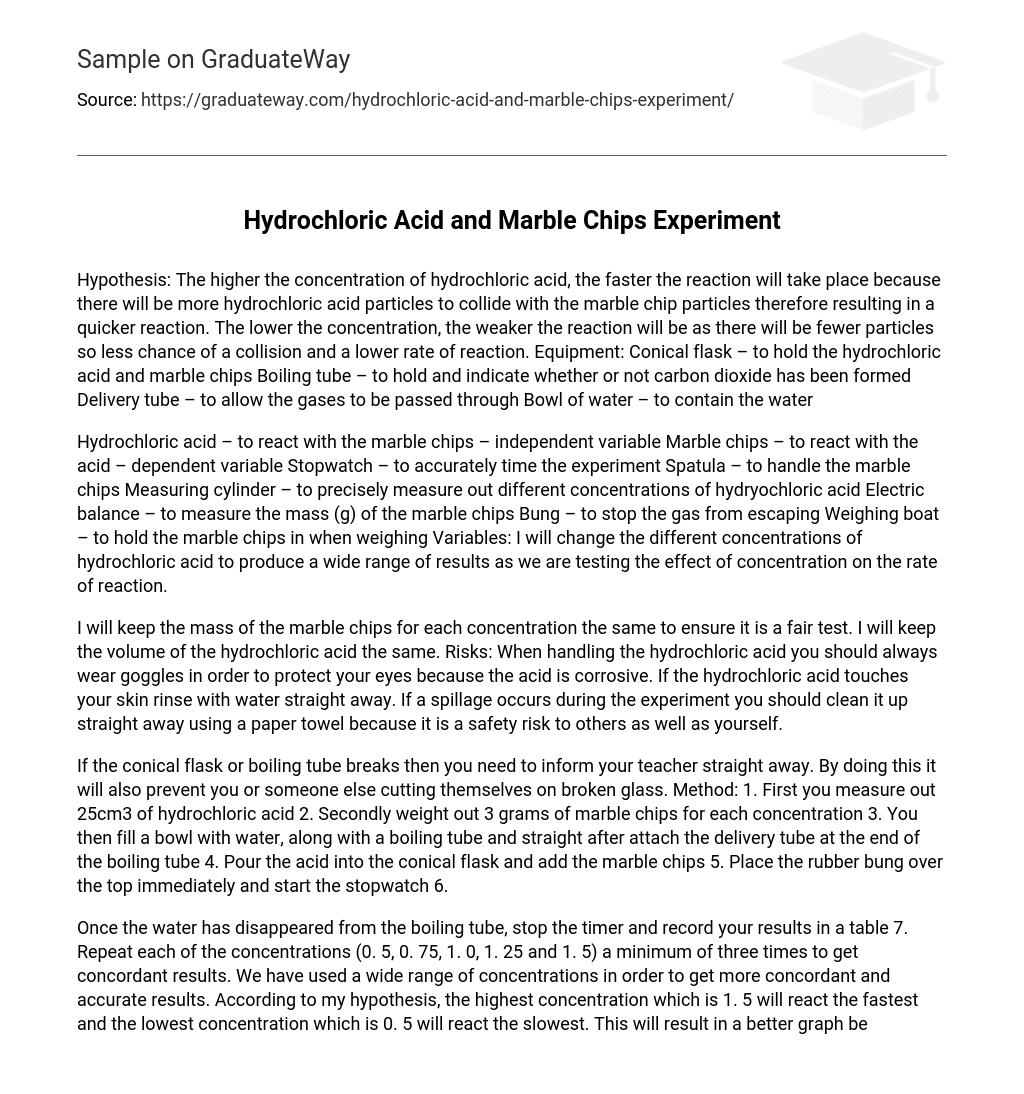Hypothesis: The higher the concentration of hydrochloric acid, the faster the reaction will take place because there will be more hydrochloric acid particles to collide with the marble chip particles therefore resulting in a quicker reaction. The lower the concentration, the weaker the reaction will be as there will be fewer particles so less chance of a collision and a lower rate of reaction. Equipment: Conical flask – to hold the hydrochloric acid and marble chips Boiling tube – to hold and indicate whether or not carbon dioxide has been formed Delivery tube – to allow the gases to be passed through Bowl of water – to contain the water
Hydrochloric acid – to react with the marble chips – independent variable Marble chips – to react with the acid – dependent variable Stopwatch – to accurately time the experiment Spatula – to handle the marble chips Measuring cylinder – to precisely measure out different concentrations of hydryochloric acid Electric balance – to measure the mass (g) of the marble chips Bung – to stop the gas from escaping Weighing boat – to hold the marble chips in when weighing Variables: I will change the different concentrations of hydrochloric acid to produce a wide range of results as we are testing the effect of concentration on the rate of reaction.
I will keep the mass of the marble chips for each concentration the same to ensure it is a fair test. I will keep the volume of the hydrochloric acid the same. Risks: When handling the hydrochloric acid you should always wear goggles in order to protect your eyes because the acid is corrosive. If the hydrochloric acid touches your skin rinse with water straight away. If a spillage occurs during the experiment you should clean it up straight away using a paper towel because it is a safety risk to others as well as yourself.
If the conical flask or boiling tube breaks then you need to inform your teacher straight away. By doing this it will also prevent you or someone else cutting themselves on broken glass. Method: 1. First you measure out 25cm3 of hydrochloric acid 2. Secondly weight out 3 grams of marble chips for each concentration 3. You then fill a bowl with water, along with a boiling tube and straight after attach the delivery tube at the end of the boiling tube 4. Pour the acid into the conical flask and add the marble chips 5. Place the rubber bung over the top immediately and start the stopwatch 6.
Once the water has disappeared from the boiling tube, stop the timer and record your results in a table 7. Repeat each of the concentrations (0. 5, 0. 75, 1. 0, 1. 25 and 1. 5) a minimum of three times to get concordant results. We have used a wide range of concentrations in order to get more concordant and accurate results. According to my hypothesis, the highest concentration which is 1. 5 will react the fastest and the lowest concentration which is 0. 5 will react the slowest. This will result in a better graph because our results will all follow a particular pattern.





